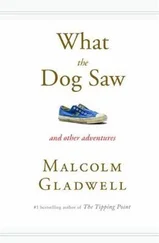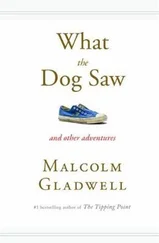Malcolm Gladwell - The Tipping Point
Здесь есть возможность читать онлайн «Malcolm Gladwell - The Tipping Point» весь текст электронной книги совершенно бесплатно (целиком полную версию без сокращений). В некоторых случаях можно слушать аудио, скачать через торрент в формате fb2 и присутствует краткое содержание. Город: Boston, New York, London, Год выпуска: 2000, ISBN: 2000, Издательство: LITTLE, BROWN AND COMPANY, Жанр: Культурология, Психология, на английском языке. Описание произведения, (предисловие) а так же отзывы посетителей доступны на портале библиотеки ЛибКат.
- Название:The Tipping Point
- Автор:
- Издательство:LITTLE, BROWN AND COMPANY
- Жанр:
- Год:2000
- Город:Boston, New York, London
- ISBN:0-316-31696-2
- Рейтинг книги:3 / 5. Голосов: 1
-
Избранное:Добавить в избранное
- Отзывы:
-
Ваша оценка:
- 60
- 1
- 2
- 3
- 4
- 5
The Tipping Point: краткое содержание, описание и аннотация
Предлагаем к чтению аннотацию, описание, краткое содержание или предисловие (зависит от того, что написал сам автор книги «The Tipping Point»). Если вы не нашли необходимую информацию о книге — напишите в комментариях, мы постараемся отыскать её.
The Tipping Point — читать онлайн бесплатно полную книгу (весь текст) целиком
Ниже представлен текст книги, разбитый по страницам. Система сохранения места последней прочитанной страницы, позволяет с удобством читать онлайн бесплатно книгу «The Tipping Point», без необходимости каждый раз заново искать на чём Вы остановились. Поставьте закладку, и сможете в любой момент перейти на страницу, на которой закончили чтение.
Интервал:
Закладка:
I think it is worth repeating something from the beginning of this chapter, a quote from Donald Rubinstein describing just how deeply embedded suicide had become in the teen culture of Micronesia.
A number of young boys who attempted suicide reported that they first saw or heard about it when they were 8 or 10 years old. Their suicide attempts appear in the spirit of imitative or experimental play. One 11-year-old boy, for example, hanged himself inside his house and when found he was already unconscious and his tongue protruding. He later explained that he wanted to "try" out hanging. He said that he did not want to die.
What is tragic about this is not that these little boys were experimenting. Experimenting is what little boys do . What is tragic is that they have chosen to experiment with something that you cannot experiment with. Unfortunately, there isn't ever going to be a safer form of suicide, to help save the teenagers of Micronesia. But there can be a safer form of smoking, and by paying attention to the Tipping Points of the addiction process we can make that safer, less sticky form of smoking possible.
EIGHT
Conclusion
FOCUS, TEST, AND BELIEVE
Not long ago a nurse by the name of Georgia Sadler began a campaign to increase knowledge and awareness of diabetes and breast cancer in the black community of San Diego. She wanted to create a grassroots movement toward prevention, and so she began setting up seminars in black churches around the city. The results, however, were disappointing. "There'd be maybe two hundred people in church, but we'd get only twenty or so to stay, and the people who were staying were people who already knew a lot about those diseases and just wanted to know more. It was very discouraging." Sadler couldn't get her message to tip outside of that small group.
She realized she needed a new context. "I guess people were tired and hungry after the service," she says. "We all have a busy life. People wanted to get home." She needed a place where women were relaxed, receptive to new ideas, and had the time and opportunity to hear something new. She also needed a new messenger, someone who was a little bit Connector, a little bit Salesmen, and a little bit Maven. She needed a new, stickier way of presenting the information. And she needed to make all those changes in such a way that she didn't exceed the very small amount of money she'd cobbled together from various foundations and funding groups. Her solution? Move the campaign from black churches to beauty salons.
"It's a captive audience," Sadler says. "These women may be at a salon for anywhere from two hours to eight hours, if they're having their hair braided." The stylist also enjoys a special relationship with her client. "Once you find someone who can manage your hair, you'll drive a hundred miles to see her. The stylist is your friend. She takes you through your high school graduation, your wedding, your first baby. It's a long-term relationship. It's a trusting relationship. You literally and figuratively let your hair down in a salon." There is something about the profession of stylist, as well, that seems to attract a certain kind of person — someone who communicates easily and well with others, someone with a wide variety of acquaintances. "They're natural conversationalists," Sadler says. "They love talking to you. They tend to be very intuitive, because they have to keep an eye on you and see how you're doing."
She gathered together a group of stylists from the city for a series of training sessions. She brought in a folklorist to help coach the stylists in how to present their information about breast cancer in a compelling manner. "We wanted to rely on traditional methods of communication," Sadler says. "This isn't a classroom setting. We wanted this to be something that women wanted to share, that they wanted to pass on. And how much easier is it to hang the hooks of knowledge on a story?" Sadler kept a constant cycle of new information and gossipy tidbits and conversational starters about breast cancer flowing into the salons, so that each time a client came back, the stylist could seize on some new cue to start a conversation. She wrote the material up in large print, and put it on laminated sheets that would survive the rough and tumble of a busy hair salon. She set up an evaluation program to find out what was working and to see how successful she was in changing attitudes and getting women to have mammograms and diabetes tests, and what she found out was that her program worked. It is possible to do a lot with a little.
Over the course of The Tipping Point we've looked at a number of stories like this — from the battle against crime in New York to Lester Wunderman's Columbia Record Club treasure hunt — and what they all have in common is their modesty. Sadler didn't go to the National Cancer Institute or the California State Department of Health and ask for millions of dollars to run some elaborate, multimedia public awareness campaign. She didn't go door to door through the neighborhoods of San Diego, signing women up for free mammograms. She didn't bombard the airwaves with a persistent call for prevention and testing. Instead she took the small budget that she had and thought about how to use it more intelligently. She changed the context of her message. She changed the messenger, and she changed the message itself. She focused her efforts.
This is the first lesson of the Tipping Point. Starting epidemics requires concentrating resources on few key areas. The Law of the Few says that Connectors, Mavens, and Salesmen are responsible for starting word-of-mouth epidemics, which means that if you are interested in starting a word-of-mouth epidemic, your resources ought to be solely concentrated on those three groups. No one else matters. Telling William Dawes that the British were coming did nothing for the colonists of New England. But telling Paul Revere ultimately meant the difference between defeat and victory. The creators of Blue's Clues developed a sophisticated, half-hour television show that children loved. But they realized that there was no way that children could remember and learn everything they needed to remember and learn from a single viewing. So they did what no one had ever done in television before. They ran the same show five times in a row. Sadler didn't try to reach every woman in San Diego all at once. She took what resources she had and put them all into one critical place — the beauty salon.
A critic looking at these tightly focused, targeted interventions might dismiss them as Band-Aid solutions. But that phrase should not be considered a term of disparagement. The Band-Aid is an inexpensive, convenient, and remarkably versatile solution to an astonishing array of problems. In their history, Band-Aids have probably allowed millions of people to keep working or playing tennis or cooking or walking when they would otherwise have had to stop. The Band-Aid solution is actually the best kind of solution because it involves solving a problem with the minimum amount of effort and time and cost. We have, of course, an instinctive disdain for this kind of solution because there is something in all of us that feels that true answers to problems have to be comprehensive, that there is virtue in the dogged and indiscriminate application of effort, that slow and steady should win the race. The problem, of course, is that the indiscriminate application of effort is something that is not always possible. There are times when we need a convenient shortcut, a way to make a lot out of a little, and that is what Tipping Points, in the end, are all about.
The theory of Tipping Points requires, however, that we reframe the way we think about the world. I have spent a lot of time, in this book, talking about the idiosyncrasies of the way we relate to new information and to each other. We have trouble estimating dramatic, exponential change. We cannot conceive that a piece of paper folded over 50 times could reach the sun. There are abrupt limits to the number of cognitive categories we can make and the number of people we can truly love and the number of acquaintances we can truly know. We throw up our hands at a problem phrased in an abstract way, but have no difficulty at all solving the same problem rephrased as a social dilemma. All of these things are expressions of the peculiarities of the human mind and heart, a refutation of the notion that the way we function and communicate and process information is straightforward and transparent. It is not. It is messy and opaque. Sesame Street and Blue's Clues succeed, in large part, because of things they do that are not obvious. Who would have known, beforehand, that Big Bird had to be on the same set as the adult characters? Or who could have predicted that going from 100 to 150 workers in a plant isn't a problem, but going from 150 to 200 is a huge problem? In the phone book names test that I gave, I'm not sure anyone would have predicted that the high scores would have been over 100 and the low scores under 10. We think people are different, but not that different.
Читать дальшеИнтервал:
Закладка:
Похожие книги на «The Tipping Point»
Представляем Вашему вниманию похожие книги на «The Tipping Point» списком для выбора. Мы отобрали схожую по названию и смыслу литературу в надежде предоставить читателям больше вариантов отыскать новые, интересные, ещё непрочитанные произведения.
Обсуждение, отзывы о книге «The Tipping Point» и просто собственные мнения читателей. Оставьте ваши комментарии, напишите, что Вы думаете о произведении, его смысле или главных героях. Укажите что конкретно понравилось, а что нет, и почему Вы так считаете.










